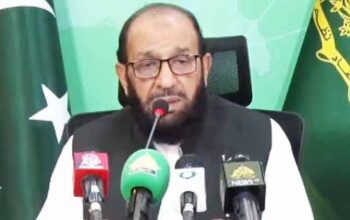By Staff Reporter
ISLAMABAD: Pakistan is facing a daunting challenge in ensuring universal education for its children, as a new report revealed that more than 26 million of them are out of school, the highest number after Nigeria and India.
The Pakistan Education Statistics Report for 2021-2022, released on Sunday by the Pakistan Institute of Education (PIE), a subsidiary of the education ministry, showed that 39 percent of all children of school-going age in the country are not attending any formal or informal educational institution.
The report, which is issued every five years, also found that the number of out-of-school children has increased from 22.02 million in 2016-17, despite a 5 percent drop in their percentage from 44 percent in the same period.
Analysts attributed the increase in the absolute number to the population growth rate outpacing the decrease in out-of-school children.
The data highlighted the regional and economic disparities in educational access, with Balochistan, the country’s poorest and least developed province, having the highest percentage of out-of-school children at 65 percent, followed by Sindh at 43 percent, Punjab at 37 percent, and Khyber-Pakhtunkhwa at 30 percent.
The federal capital, Islamabad, which has the highest literacy rate in the country, had the lowest percentage of out-of-school children at 9 percent.
In number terms, Punjab tops the list with 10.11 million children lacking access to education, followed by Sindh with seven million, Khyber-Pakhtunkhwa with 3.6 million, and Balochistan with 3.1 million. Additionally, the federal capital, Islamabad, has 80,000 children who are not attending school.
A substantial portion of the out-of-school children, totaling 10.77 million, is at the primary level, emphasizing the urgent need for targeted interventions to enroll and retain them in schools.
At the intermediate level, which corresponds to grades 11 and 12, 60 percent of students are still deprived of education, while at the matriculation, middle, and primary levels, 44 percent, 30 percent, and 36 percent of children, respectively, are not attending school.
Analysts said the economic disparities play a significant role in educational access, with children from the poorest quintile facing the highest disadvantage, evident across all education levels.
They called for a comprehensive and coordinated strategy to address the multiple factors that contribute to the high number of out-of-school children, such as poverty, social norms, gender discrimination, security issues, lack of infrastructure, and quality of education.
Copyright © 2021 Independent Pakistan | All rights reserved




